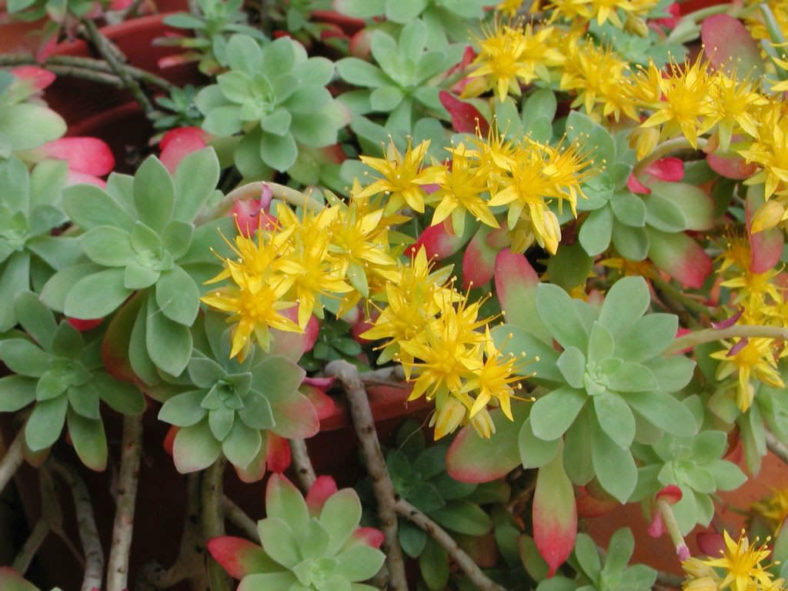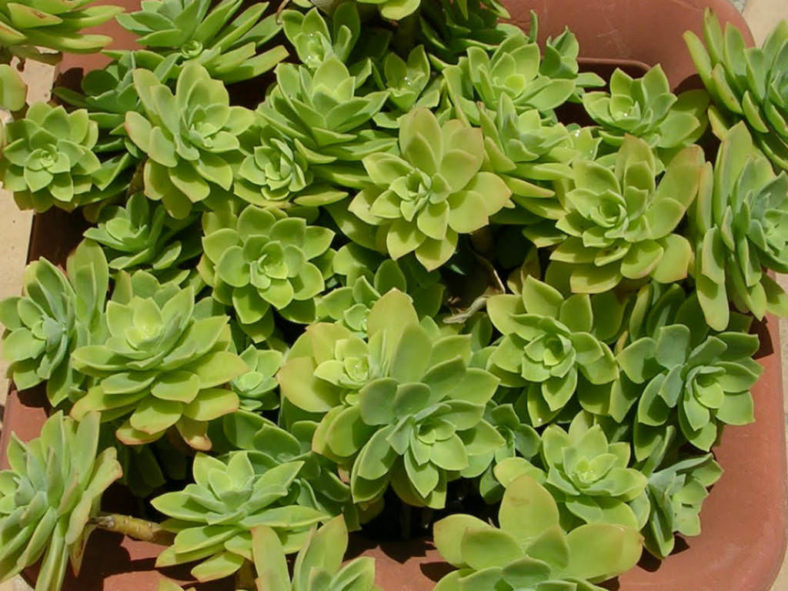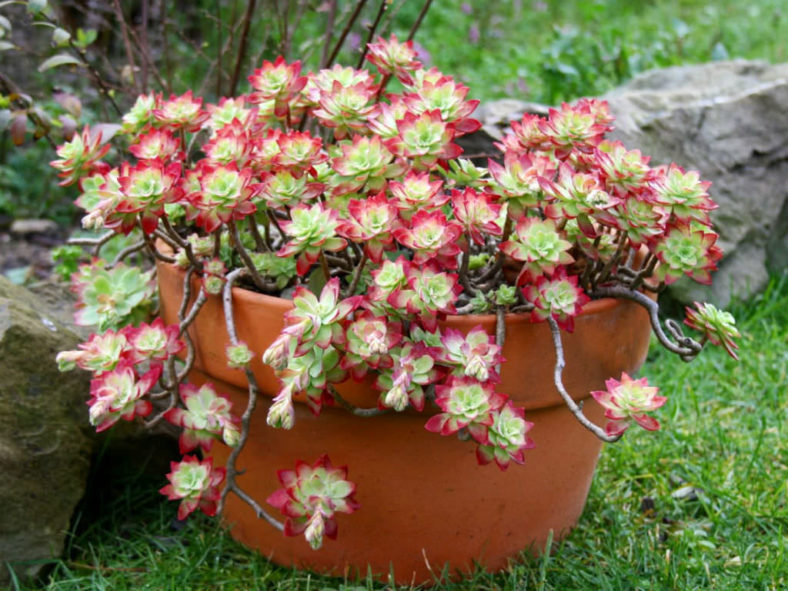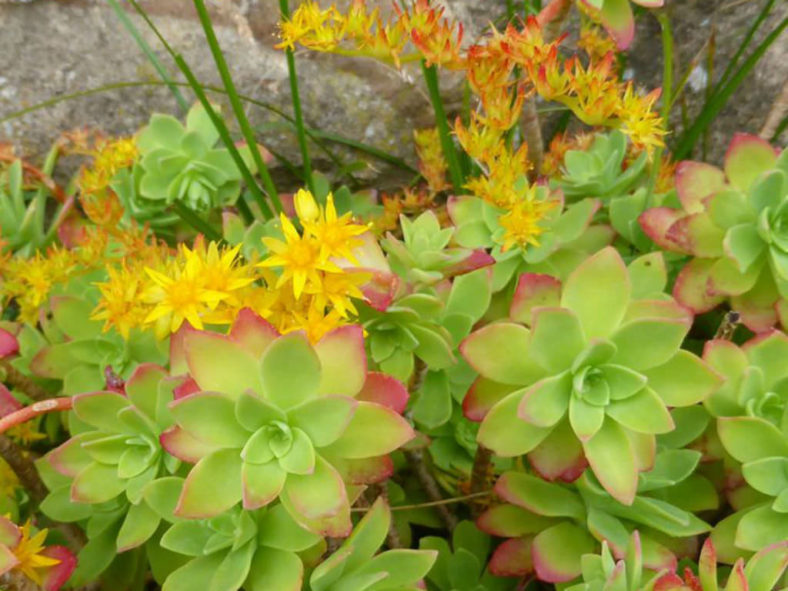Scientific Name
Sedum palmeri S. Watson
Common Name(s)
Palmer's Sedum, Palmer's Stonecrop
Synonym(s)
Sedum compressum, Sedum palmeri subsp. emarginatum, Sedum palmeri subsp. rubromarginatum
Scientific Classification
Family: Crassulaceae
Subfamily: Sempervivoideae
Tribe: Sedeae
Genus: Sedum
Etymology
The specific epithet "palmeri" (pronounced PALM-er-ee) honors Edward Palmer (1829-1911), a self-taught British botanist and an early American archaeologist.
Origin
Sedum palmeri is native to Mexico.
Description
Sedum palmeri is an attractive succulent subshrub with rosettes of thick, fleshy, pale green leaves at the ends of flexuous stems. It can grow up to 10 inches (25 cm) tall and spread 20 inches (50 cm). The rosettes are usually about 1.6 inches (4 cm) in diameter. The leaves are narrowly spatulate, sometimes slightly pointed, and can measure up to 1.2 inches (3 cm) long. They turn reddish-pink in winter or if grown in strong sunlight.
The golden yellow flowers are star-shaped and appear in late winter or early spring.

How to Grow and Care for Sedum palmeri
Light: These succulents grow best in locations where they enjoy the full sun for at least six hours daily. Most species tolerate partial shade but do not thrive in deep shade.
Soil: Sedums do not like to sit in waterlogged soil, so drainage is essential to prevent root rot. Choose a gritty, well-draining soil.
Hardiness: Sedum palmeri can withstand temperatures as low as 0 to 40 °F (-17.8 to 4.4 °C), USDA hardiness zones 7a to 10b.
Watering: Sedum plants are drought-tolerant but do need some water. They do their best with regular watering from spring through fall. Water thoroughly and wait for the soil to dry out before watering again.
Fertilizing: Sedums generally require only a balanced organic fertilizer each spring. Feeding is unnecessary as long as the plants are divided annually and provided with fresh soil.
Repotting: Sedums in containers require little more care than those in gardens. Repot your plants when they outgrow their current pot by moving them to a larger container to hold the plant better.
Propagation: Once you have one Sedum, it is easy to make more by taking stems or leaf cuttings and dividing the plant. Sedums are also easy to grow from seed.
Learn more at How to Grow and Care for Sedum.
Toxicity of Sedum palmeri
Sedums are not listed as toxic for people but can be mildly toxic to pets and children.
Cultivars and Hybrids of Sedum palmeri
Links
- Back to genus Sedum
- Succupedia: Browse succulents by Scientific Name, Common Name, Genus, Family, USDA Hardiness Zone, Origin, or cacti by Genus
Photo Gallery
Click on a photo to see a larger version.


